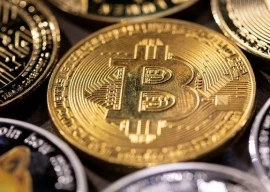
Pakistan continues to grapple with the challenge of weak exports. This has had an adverse impact on the nation’s trade balance, current account, and foreign exchange reserves.
The modest scale and sluggish growth of exports are major factors driving the country to frequently seek International Monetary Fund (IMF) bailouts.
Pakistan’s export profile is not only limited in size but also lacks diversity. The textile industry bears the brunt of this responsibility, accounting for nearly half of all of the country’s exports in goods and services in the last fiscal year, according to data from the State Bank of Pakistan (SBP).
During the latter stages of the pandemic, the textile sector saw a significant growth spurt, seizing market share as competitors in India and Bangladesh were forced to shut down to control the virus spread. Government incentives and subsidies played a key role in this growth, with textile exports increasing by 12.6% in FY21 and 28% in FY22.
Unfortunately, this upward trend did not continue. In the face of economic challenges and political crises, the textile sector experienced a downturn, with exports decreasing by 9.8% in FY23 and a further 6.3% in the first four months of the ongoing FY24.
However, the Ministry of Commerce’s Export Advisory Council (EAC), comprising top figures from the textile industry, has put forward a highly ambitious export target. They propose that, with the right mix of incentives and reduced trade barriers, Pakistan’s textile exports could soar to $50 billion within five years.
This target far exceeds the $16.6 billion in textile exports recorded last year and surpasses even Pakistan’s total goods and services exports of $35.5 billion.
It seems that the EAC aims to increase textile exports by a staggering 200% compared to last year’s figures, a goal that could herald a period of economic prosperity for Pakistan.
However, it’s crucial for policymakers to adopt a broader perspective, considering both the historical performance of the textile sector and the current global business climate before structuring any incentives.
It’s important to note that while the textile sector has shown impressive growth in the recent past, this surge was significantly influenced by the pandemic’s disruption of global supply chains. A longer-term perspective reveals a rather disappointing picture of the sector’s performance.
SBP data shows that from FY11 to FY20, Pakistan’s textile exports remained stagnant, fluctuating between $12 billion and $13 billion. The pandemic did provide a boost, elevating textile exports to $18.4 billion by FY22. However, this increase represents a modest growth of only 44% over a 10-year span.
Therefore, an important question arises: Is it even possible for Pakistan’s textile sector to achieve a 200% increase in exports over the next five years, considering it only managed 44% growth over the past decade in a more favourable economic environment? This query gains significance when we reflect on the advantages the sector previously enjoyed.
Historically, the textile industry in Pakistan has benefited from various incentives, including easy access to soft loans, refinance facilities, and subsidised energy rates.
Read Textile industry unveils $50b export plan
The textile sector also operated during what is often referred to as the ‘free money era’, a time that started in the aftermath of the global financial crisis of 2008, in which the global central banks slashed interest rates and pursued expansionary monetary policies.
This era was characterised by reduced borrowing costs and heightened demand, which supported business growth.
Simultaneously, the global economy, encompassing Pakistan’s key trade partners like the US, China, and the UK, experienced robust growth. This period of economic recovery followed the 2008-09 global financial crisis and continued until the onset of the Covid-induced recession in 2020.
Despite these favourable global conditions, the growth of Pakistan’s textile sector during this time was notably lacklustre.
Now, Pakistan’s textile industry is facing a tough business environment. With the State Bank setting interest rates at a record 22%, borrowing costs are higher than ever.
Concurrently, the global economic slowdown and the looming recession in some of Pakistan’s trading partners like the UK signal a potential decrease in demand for textile products. This poses a major challenge for the textile sector, which must navigate economic difficulties both domestically and internationally.
The industry is likely to seek incentives such as tax breaks, reduced energy costs, and affordable financing to bolster its ambition of increasing exports to $50 billion. However, the onus lies on policymakers to evaluate the feasibility of this target.
Given the present situation, it seems increasingly likely that the textile sector may struggle to even sustain its current export volumes, let alone achieve unprecedented growth rates.
The textile industry is undeniably vital to Pakistan’s economy. It warrants appropriate incentives. Yet, the government’s limited financial resources necessitate careful allocation, ensuring they benefit sectors with the highest potential for growth and employment.
Policymakers must conduct a thorough cost-benefit analysis before allocating incentives to any sector.
Incentives should also be considered for other sectors, such as the oil refining industry. This could spur development of the oil sector, giving birth to other value-added industries (like petrochemicals) as well, contributing significantly to the economy.
Enhancing refining capacity could not only improve energy security but also transform the oil refining into an export-oriented industry, offering substantial geopolitical advantages, as we have seen with India.
Another option could be to direct soft loans to individuals for home purchases. This bottom-up approach (unlike the trickle-down effect of other economic policies) could have a more direct impact on the masses. Such a scheme could rejuvenate the construction and real estate sectors, which, like textiles, are labour-intensive.
Policymakers must meticulously evaluate the potential of different sectors before allocating incentives, especially considering the country’s challenging economic situation, the textile industry’s track record, and the global business environment.
THE WRITER IS A CORPORATE CONSULTANT SPECIALISING IN BUSINESS AND ECONOMIC ISSUES
Published in The Express Tribune, December 18th, 2023.
Like Business on Facebook, follow @TribuneBiz on Twitter to stay informed and join in the conversation.


1725612926-0/Tribune-Pic-(8)1725612926-0-165x106.webp)



















COMMENTS
Comments are moderated and generally will be posted if they are on-topic and not abusive.
For more information, please see our Comments FAQ